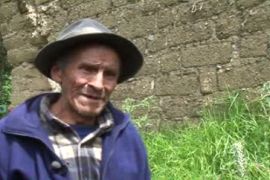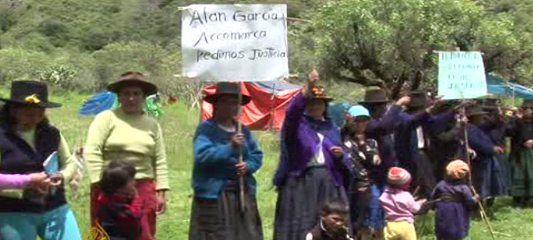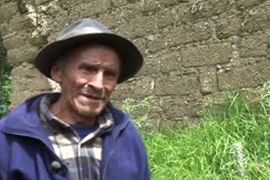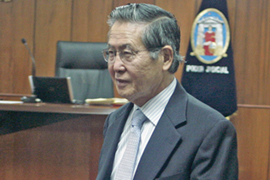Peru’s legacy of conflict
Al Jazeera visits an Andean village struggling with effects of past wars.

 |
| Peruvian villagers are demanding justice for the massacres that took place in past conflicts |
The road was long and perilous high up in the Andes’ mountains. We travelled 14 hours from Lima to Accomarca, a remote and forgotten village where time seemed to have stood still.
Not much has changed for the 500 families who lived through the worst of the violence of the 1980’s and 90’s when the Peruvian army battled against Shining Path rebels.
The Shining Path, a Maoist group who carried out a bloody campaign to overthrow the government, killed community leaders, police, soldiers and innocent civilians.
The army carried out its own brutal response to the Shining Path – targeting villages high in the Andes that they said supported the Shining Path.
This response reached Accomarca on the morning of August 14, 1995.
To the army, the villagers were suspects of supporting the Shining Path.
Two army patrols under then deputy lieutenant Telmo Hurtado forced the villagers to walk three kilometres down a mountain, to a place the villagers know as Llocllapampa.
There they separated the men from the women.
 |
| Cesar Gamboa saw his own children killed by the army |
Cesareo Gamboa, now 75, hid behind the bushes and saw the soldiers forcing women and children into his own home, among them his nine and seven year old daughters.
He says the soldiers shot at them and then threw at least one grenade inside the home.
“The soldiers shot those who tried to flee, they killed my children, I am still suffering for this,” he cried.
By the end of the day the soldiers had killed 69 villagers. Among them the elderly, pregnant women and 26 children.
Justice demanded
When we reached Llocllapampa, the villagers had walked there and gathered to receive us.
They were holding banners pleading for attention, many were crying.
It is evident that the wounds have not healed, and the villagers say they still cannot understand why 26 children were brutally murdered.
“It’s been 23 years, we want justice”, they shouted.
A government commission investigated the case, but none of the perpetrators were charged with serious violations of human rights.
Alan Garcia, who was president at the time of the massacre, promoted Hurtado to Major.
Military ‘impunity’
And across Peru, tens of thousands suffered during the conflict.
 |
| Alberto Fujimori, the former president, over deaths during the conflict [EPA] |
A Truth and Reconciliation Commission concluded in 2003 that 70,000 Peruvians had been killed or remained missing.
It also said more than 2000 mass graves that remain undiscovered.
The Commission said most of the killers were Shining Path rebels, and many were tried and sentenced, but few soldiers have been held responsible for the many atrocities committed by the army.
Javier Diez Canseco, a former congressman and head of the Accomarca investigation, says it is difficult to prove Garcia ordered the strategy used by the army to combat Shining Path.
“But on the other hand he sanctioned the military heads of the area, he upgraded Hurtado to lieutenant and then to Major, and that means there was a state policy of impunity.”
Most of the atrocities occurred during Alan Garcia and Alberto Fujimori’s governments.
Alberto Fujimori recently return to face trial on murder charges and for sanctioning a paramilitary death squad known as ‘Grupo Colina’ that operated from the heart of the intelligence service known as the “Pentagonito.”
But human rights advocates in Peru say many questions remain unanswered, among them, how much did Peruvian military and political leaders know about the atrocities that were committed by the army.
Living in fear
For the villagers of Accomarca, the struggle is not only with the memories of past conflicts, but against the desperate poverty that grips most Andean villages.
When I asked Mayor Alfredo Gomez, what was the minimum wage for any villager his answer was another question: “What minimum salary? There are no wages here, people eat what they grow.”
One small communally owned truck takes these products to other villages to barter for yarn or animals.
The villagers are, for the first time, now building a sewage and drinking water system, paid by an Italian NGO.
There is one nurse who not only attends the 500 families that live here, but travels all around the region’s small villages to give medical services.
“The government has completely forgotten us”, Gomez says.
“People have not been able to overcome the trauma lived in the past, and that has caused a deep depression to the community, they don’t want to work and they feel that they can suffer again from the Shining Path presence.”
A new faction of Shining Path, known as “Proseguir”, which means “to continue”, is small in numbers and lacks the support of the people.
But it has managed to perpetrate ambushes and killings and is slowly gaining the support among the young.
And some fear that the desperate poverty of the Andes could see them rise again.